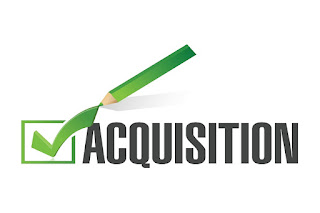What is Acquisition Cost?
Acquisition cost is the cost of purchasing an asset. It is generally used in three different contexts in business, which include the following:
- Mergers and acquisitions
- Fixed assets
- Customer acquisition
In the context of mergers and acquisitions (M&A), the acquisition cost represents the value of compensation transferred from an acquiring company to a target company to acquire a portion of the target or the target company as a whole. In the context of fixed assets, the acquisition cost represents the total cost a company recognizes on its balance sheet for a capital asset.
In the context of customer acquisition, the acquisition cost represents the funds used to expose new customers to a company’s products in the hopes of acquiring the customer’s new business.
The acquisition cost should be distinguished from the purchase price. Although generally, they may be equivalent, the acquisition cost includes other costs associated with an acquisition, in addition to the purchase price.
Mergers and Acquisitions
In mergers and acquisitions (M&A), an acquiring company can completely absorb another company or can acquire a portion of another company by making a payment to the target’s shareholders. The payment can be made with cash, securities, or a combination of the two in what is called a mixed offering.
In an all-cash offering, the cash can come from the acquiring company’s existing assets or from a debt issue. In an all-securities offering, the target’s shareholders receive shares of the acquiring company’s common stock or other securities as compensation. The value of the payment is the consideration or purchase price of the acquisition.
In a cash offering, the acquirer’s cost is simply the value of the cash being transferred to the target’s shareholders. In a stock offering, the acquirer’s cost is determined by the product between the exchange ratio and the number of outstanding shares of the target company. The exchange ratio is the number of shares from the acquirer that the target company’s shareholders will receive in exchange for their existing shares in the target company.
Acquisition Cost (Stock Offering) = Exchange Ratio * No. of Shares Outstanding
The total acquisition cost, in addition to the purchase price, includes transaction costs. Transaction costs can include direct costs, such as fees for due diligence services, accountants, attorneys, and investment bankers. Also, they can include indirect costs, such as financing costs, debt issuance costs, and equity issuance costs.
The direct and indirect costs can be substantial and should be taken into consideration when valuing an M&A deal. To learn more about valuing and modeling M&A deals, see our Mergers & Acquisitions (M&A) Modeling course.
Fixed Assets
When purchasing fixed assets, such as property, plant, and equipment (PP&E) or other capital assets, a company is looking to acquire physical assets to be utilized within the operations of the business. They can include land, buildings, equipment, and other capital assets used to generate a future economic benefit. The assets are recognized on the balance sheet of a company and are reduced by depreciation over time.
In addition to the actual price paid for an asset itself, additional costs should be considered and recognized on the balance sheet as part of the fixed assets’ cost. The additional costs may include commission expenses, transaction fees, legal fees, and regulatory fees.
Also, other expenses to bring an asset to an operational state or working condition should be included, such as costs of shipping and receiving, and installation expenses. Furthermore, other adjustments should be taken into account to reduce the acquisition cost, such as discounts, incentives, and other closing costs.
It is important to include all the adjustments since the expenses and costs are relevant to bringing the asset to its intended use. The adjustments should be reflected on the balance sheet so that the balance sheet is a more accurate depiction of a company’s financial position in relation to the capital asset costs.
Customers
Customer acquisition costs are costs incurred to introduce new customers to a company’s products in hopes of acquiring new business. To calculate the customer acquisition cost, divide the total acquisition costs by the total number of new customers.
Acquisition Cost (Customers) = Total Acquisition Cost / Total No. of New Customers
Costs included in the total acquisition cost are marketing and advertising expenses, incentives, and discounts, along with salaries for related staff. It is an important metric from a marketing perspective and can help assess how efficient a marketing strategy is.
Acquisition costs for customers can help inform important marketing decisions, such as future capital allocations for budgeting. To learn more about budgeting and forecasting, see our Budgeting and Forecasting course.







0 Comments